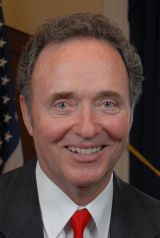 To adequately defend against a threat one needs to understand the nature of that threat. This is particularly true with regard to Islamic extremists who have attempted to hijack a religion to justify their terrorist actions against innocent men, women and children. The danger they pose to innocent lives is magnified by an unnatural obsession with death.
To adequately defend against a threat one needs to understand the nature of that threat. This is particularly true with regard to Islamic extremists who have attempted to hijack a religion to justify their terrorist actions against innocent men, women and children. The danger they pose to innocent lives is magnified by an unnatural obsession with death.
We must understand that we face an enemy who is as elusive as they are deadly and sinister. They have made adaptations in response to the measures we have taken to protect the flying public. As the threat evolves, we must constantly adjust our defenses. We did this after the shoe bomber incident and then again after the London liquid bomber. Obviously this task is made all the more difficult by the willingness of the perpetrators to offer themselves as human incendiary devices. The latest threat – a lone traveler carrying a pentaerythritol trinitrate bomb (PETN) hidden in his underwear – will again require us to adapt our defenses since the magnetometer will not be effective against this new threat.
We must understand that we face an enemy who is as elusive as they are deadly and sinister. They have made adaptations in response to the measures we have taken to protect the flying public.
Our best approach includes actionable intelligence and layered defenses. Within that overall context, the best way to detect a PETN bomb or any bomb concealed under clothing is with whole-body imaging technology. I support this screening technology because it is the very best available. It detects anomalies on the human body. It will detect plastics, ceramics, explosives, liquids and gels that cannot be detected with current technology. It would also meet the higher throughput requirements necessary for our busy airport checkpoints.
Because of 9/11, airport screening procedures (stripping down at checkpoints and taking off your shoes) have become more intrusive and sometimes irritating to air travelers. These security procedures are necessary in today’s threat environment. They are essential to secure the aircraft and ensure the safety of the traveling public. If you were told that a body bomber would be on your next flight, wouldn’t you want all passengers screened with whole-body imaging technology? Unfortunately, we won’t be given prior notice. What we do know is that Islamic extremists remain committed to killing us.
Therefore, I oppose unreasonable privacy concerns standing between me and the rest of the flying public and the Jihadist body bomber. We need to employ the very best screening technology available to deter or defeat this Jihadist threat. Safe and secure air travel is far more important than any arbitrary privacy standard. Dead people are not in a position to raise privacy concerns.
Let me be clear – I understand the initial objections to whole-body imaging technology centered on privacy concerns. We have taken steps to address the substance of those concerns: The outlined image of the screened passenger, while graphic, is not identifiable to a particular individual. The Transportation Security Administration (TSA) has separated the security operator reviewing the images (no window office) from the actual passenger being screened, so no linkage is possible. Images are not stored or transmitted and are immediately deleted after review by security personnel. Blurring techniques for the face are also used for added privacy. The final piece which should eliminate remaining privacy concerns with whole-body imaging technology is automatic detection software. This software is currently being field tested. It will allow for whole-body anomalies to be automatically identified with no need for screener review or retention of these images.
We need to employ the very best screening technology available to deter or defeat this Jihadist threat.
Whole-body imaging technology was first piloted by TSA in 2007 as an alternative to the pat down in secondary screening. With 90 percent of the public selecting whole-body imaging over the pat down, TSA has now moved it to primary screening at select airports. I agree with the vast majority of the public who chose whole body imaging over the pat down for both security and privacy reasons.
After receiving my new metal hip two years ago, I’m somewhat of an authority on pat down screening. I have been patted up and down and down and up in airports across the country. Whole-body imaging would not only relieve me of this invasive procedure but every other person with an artificial body part.
More importantly, using whole-body imaging for primary airport screening will improve our airport defenses against this evolving extremist threat. Elected officials must assure our travelers that we consider their safety to be a solemn obligation.
Dan Lungren represents the 3rd District of California in the U.S. House of Representatives. He is the Ranking Member of the Homeland Security Subcommittee on Emerging Threats, Cybersecurity, Science and Technology.




